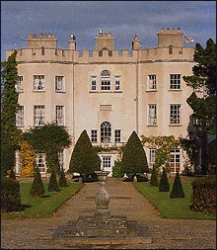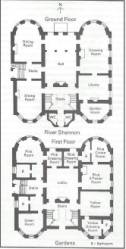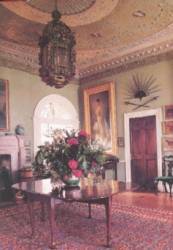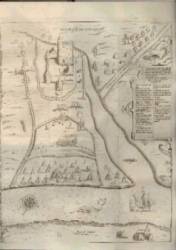

 Colonel John Bateman Fitzgerald, 24th Knight of Glin
Colonel John Bateman Fitzgerald, 24th Knight of Glin 


General Notes
From an article "Treasures of the Castle" by Desmond FitzGerald The Knight of Glin in The Glencorbry Chronicle (1997) Vol. 1 No. 1 p. 21-27:
Colonel John was about 20 when he formed his first regiment, The Glin Cavalry in 1776, which became known as the Royal Glin Hussars.
The pride of Ireland's ruling classes was present in their newly won, but brief national independence - an independence which was shaken by the French Revolution and finally shattered by the Rebellion of 1798 and the ensuing union with England in 1800. Colonel John supported this union, and did much to keep his peace in the area during the rebellion and his regiment, the Glin Cavalry, presented him with a magnificent sword with an elaborately chased blue gilt blade by Reid of Dublin in 1800.
His father had died in 1781 and he inherited considerable debts from his rackety, duelling, spendthrift uncles. Their way of dealing with the representatives of La Touche's Bank when they came to collect the rents was to set a mob on them. New leases on the 12, 000 acres of the Glin estate were advertised in March 1782 and in that year Colonel John was listed as an absentee worth £4,000 a year. In fact, he was almost always resident though probably away in England when this list was made. In those days £4,000 a year was a handsome income.
In 1789 Colonel John married his beautiful English wife, Margaretta Maria Fraunceis Gwyn of Forde Abbey, the daughter of a rich west country squire. Her coat of arms is impaled with his on the hall ceiling of Glin Castle, which suggests that the house was still being decorated at the time of their marriage.
Colonel John and his wife Margaretta together built Glin Castle.
Financial problems must have marred the couple's brief decade together at Glin, because in 1791 the Dublin La Touche Bank called in their debts (more than £400,000 in today's money), which went as far back as 1736 and took a case to parliament. In June 1801 a private act of parliament in Westminster was passed which forced the sale of part of the Glin estate in order to pay off the many 'encumbrances' which had accrued during the 18th century. This document mentions that Colonel John had expended ' six thousand pounds and upwards in building a mansion house and offices and making plantations and other valuable and lasting improvements'.
Margaretta died at one of her father's properties, Combe Florey in Somerset, a few months after the act was passed. In 1802, 5,000 acres of Glin were sold, and Colonel John himself died in 1803 leaving an only son and heir, John Fraunceis, age 12. In June 1803 the local newspaper, the 'Limerick Chronicle', advertised sales of the household furniture, the library, a 'superb service of India china', but no paintings or silver. The hall chairs and armorial sideboard in the hall were spared because of their family associations, but carriages, farm stock, and the 'fast sailing sloop' ' The Farmer', 'her cabin nearly fitted up' followed. The FitzGeralds of Glin were literally bankrupt.
Glin castle, home to the 29th Knight of Glin, has been in the FitzGerald family for over 700 years. Situated 32 miles west of Limerick city on the banks of the Shannon River on a 500 acre estate, it is one of the last of the great houses to still be lived in by the original family. Glin Castle has superb interiors with neo classical plasterwork, a rare flying staircase and reportedly the best collection of Irish 18th century furniture, pictures and porcelain in private hands. There are formal gardens and pleasure grounds and a walled kitchen garden. The Castle offers exclusive accommodation to paying guests. There is also an extensive dairy farm attached to the estate.
-
Individual Additional Information
-
Associated external link media/ind00162.htm
 Details of Colonel John Bateman's family with Margaretta Maria Fraunceis Gwyn
Details of Colonel John Bateman's family with Margaretta Maria Fraunceis Gwyn
Page last modified
This page is within a frameset. View the entire genealogy report of Fitzgerald, 24th Knight of Glin families, or surname index of Fitzgerald, 24th Knight of Glin pedigrees or report summary Fitzgerald, 24th Knight of Glin heritage from 'Moore, Simpson, Ballard Family Tree - England and Scotland to Australia'.
Genogram Templates.
Copyright © 2011 GenoPro Inc. All rights reserved.










